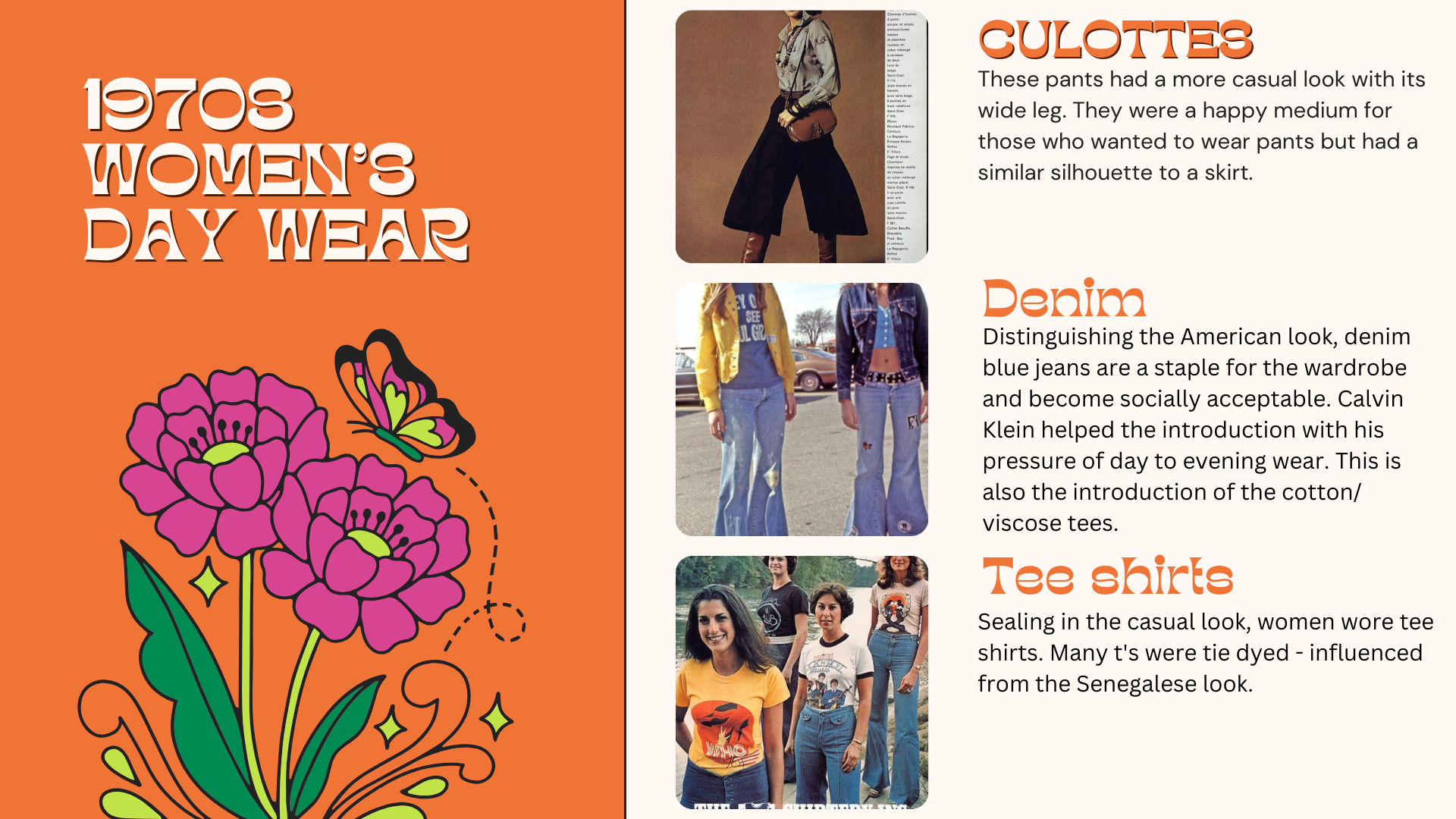The Objective
In my Twentieth-Century Fashion class that I took, our cumulative projects consisted of analyzing three different eras in fashion. In this case, I discussed the 1960’s, 1970’s, and 1980’s. Each decade included:
historical context
women’s day wear
women’s evening wear
men’s wear
accessories
Analysis of ‘60s, ‘70s, and ‘80s Fashion
Skills, And Such
This project displays my well-rounded understanding of consumerism over time.
-
I grew my understanding of historical events socially, culturally, politically, and environmentally that ultimately reflected changes in values - leading to changes in fashion.
-
Using the necessary tools, I cross-utilized Canva and graphic design principles to create a visually digestible/ informational presentation.
-
Understanding the cause-and-effect relationship in the fashion industry is not directly linear. Here, I illustrated the context needed to better comprehend these concepts.
-
Since these eras of fashion moved at such exponential speeds compared to prior, I was able to analyze the newly appearing causations to these consumer behaviors.
-
During the research process, I navigated through data that had possibility of being aged or inaccurate to develop a clear idea of this time phrame.
-
It is imperative to consider that not every viewer will understand the historical context or fashion related terms, so I enforced inclusive language in my project so everyone can learn.
Key takeaways…
The emergence of branding grew at such an exponential rate, paralleling technological and economic growth seen at this time. Especially in the 1980s, with the booming pop culture - brands adopt anthropomorphism.
Let’s BREAK DOWN what that word means…..
anthro=human morphism=taking a shape or form
So, in order to connect with consumers on a more personable level, brands give their products humanistic attributes… What I mean is that brands are using strategies such as:
licensing characters from television shows and movies to reach customers
ex: E.T. children’s lunch boxes
Creation of “mascots”
ex: Cereal boxes get characters like “Snap, Crackle, and Pop!” for Rice Crispies and Tony the Tiger for Frosted Flakes
How could this possibly affect consumers in the long term?
Well, using verbiage and visuals to connect consumers with products eventually will get them to emotionally disconnect from the quality and production process - allowing brands to easily produce cheaply made products at an exponential rate.



















